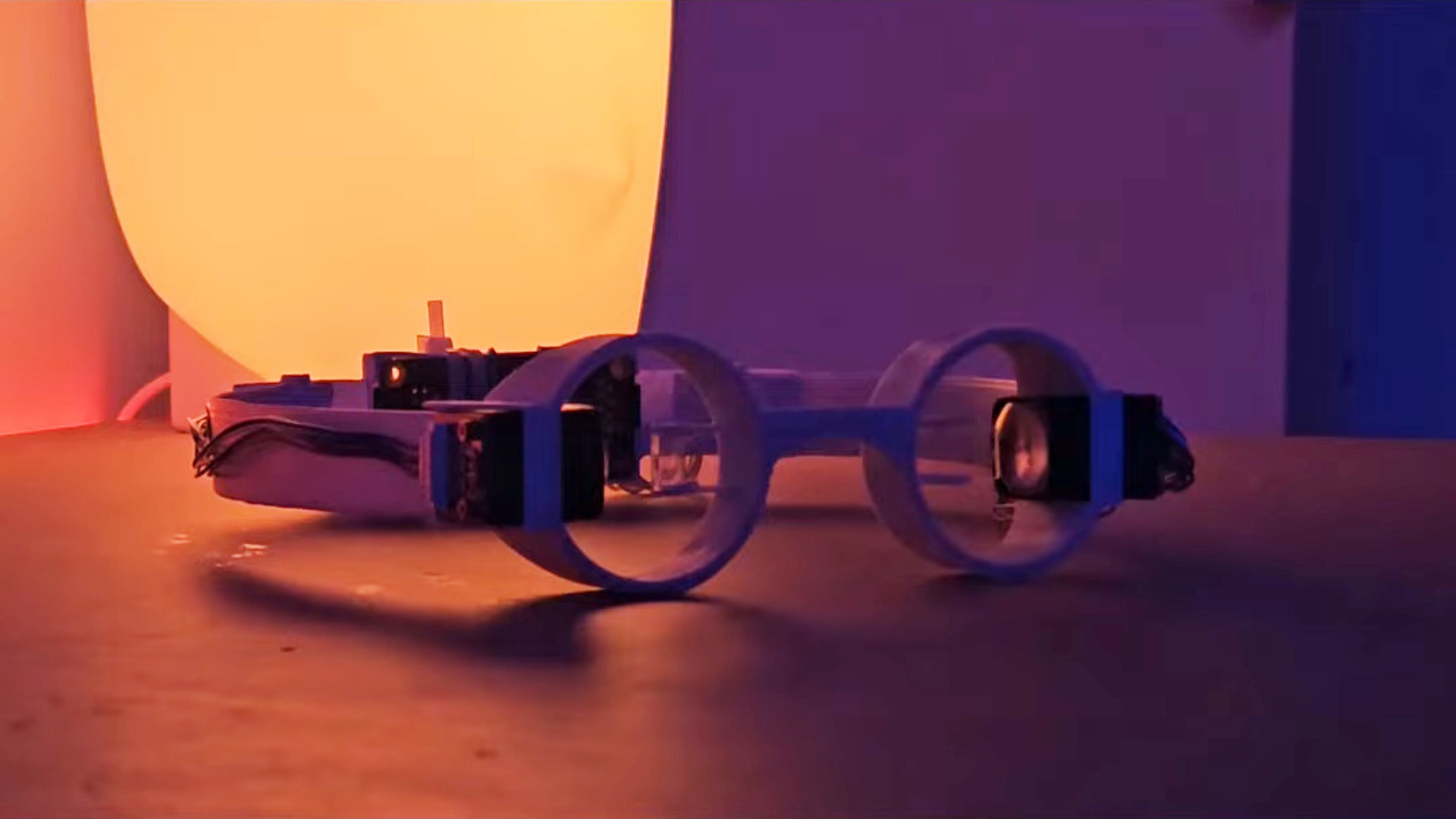The goggles, they do everything: These scratch-built AR glasses even have homemade lenses
Quite the fashion statement, too.

What would the world be without its maker community? While the giants of the tech industry have begun playing around with all sorts of AR and VR tech, one enthusiast has already built a functioning prototype of their own vision of an AR future.
Miroslav Kotalík has been showing off his latest creation on Twitter—a set of AR glasses powered by a Raspberry Pi (via Tom's Hardware). What's really impressive here is the dedication to the "build-it-from-scratch" ethos, as while the frames are 3D printed—as you might expect from a maker community build—Kotalík has gone one step further and figured out a way to cast the lenses from scratch, too.
How I built Zero, the cheap, self contained pair of AR goggles running web apps. What I've learned and where I'm heading:A thread 🧵 (0/10)#ar #vr #xr pic.twitter.com/rSSIbOVYLaOctober 18, 2024
The project is called Zero, and began with a series of tests using telescope optics. After figuring out a projection system, Kotalík experimented with 3D printing for the lenses, although quickly realised that unavoidable air gaps made the results less than ideal. Instead, he pivoted to casting, creating 3D printed moulds that were then filled with clear resin and cured, sanded and polished to create a useable lens.
Two tiny SPI displays were then fitted in front of a housing, and a driver was created allowing for low-latency 60 fps image reproduction through the Raspberry Pi. A frame was then 3D printed, with the majority of the components being pushed to the sides of the glasses, before the results went through a series of iterations to adjust distance and switch the optical component to a single lens.
Finally, a backend was designed to integrate sensors and to run apps. Kotalík says building apps for the system is "super easy", and only requires writing them as an HTML, CSS, or JavaScript page and putting them in the correct folder to run.
The end results look like something of a cross between a fashionable pair of hipster glasses, and a Bladerunner-style goggle setup. While Kotalík seems happy with the results, he also admits that the prototype is "obviously very far from a consumer device", and has big plans for the future.
This includes the integration of a camera, GPS, and sim slot, adding a wide range of extra functionality to the goggles. The idea here seems to be to create something that's much more slimmed-down, portable, and useable than some other offerings in the works from companies like Meta, which showed off its own AI-powered "neural AI glasses" earlier this year.
The biggest gaming news, reviews and hardware deals
Keep up to date with the most important stories and the best deals, as picked by the PC Gamer team.
Kotalík has also created a video showing him wearing the glasses in public, along with some slightly blurry footage of what they look like for the wearer in usage.
While wearing a hoodie hides a lot of the side-sections to create a more seamless result, it's impressive that the glasses blend in to his overall getup enough that you might not look twice if you were to pass someone wearing them on the street.
The overall AR effect looks hazy in the footage, but it can be difficult to capture this sort of display on a traditional camera—and as a first iteration of the prototype, I reckon it's an excellent demonstration of where Kotalík's ambitious product is heading.
I'd still rather wear a pair of these over the Meta offerings, which to me look uncomfortably close to the sort of thing Michael Caine was attaching to his face in the 70s. More power to your elbow, that's what I say, and this project stands out as a brilliant example of maker ingenuity tackling the cutting edge of technology, and coming up with properly useable results.

Andy built his first gaming PC at the tender age of 12, when IDE cables were a thing and high resolution wasn't—and he hasn't stopped since. Now working as a hardware writer for PC Gamer, Andy's been jumping around the world attending product launches and trade shows, all the while reviewing every bit of PC hardware he can get his hands on. You name it, if it's interesting hardware he'll write words about it, with opinions and everything.


